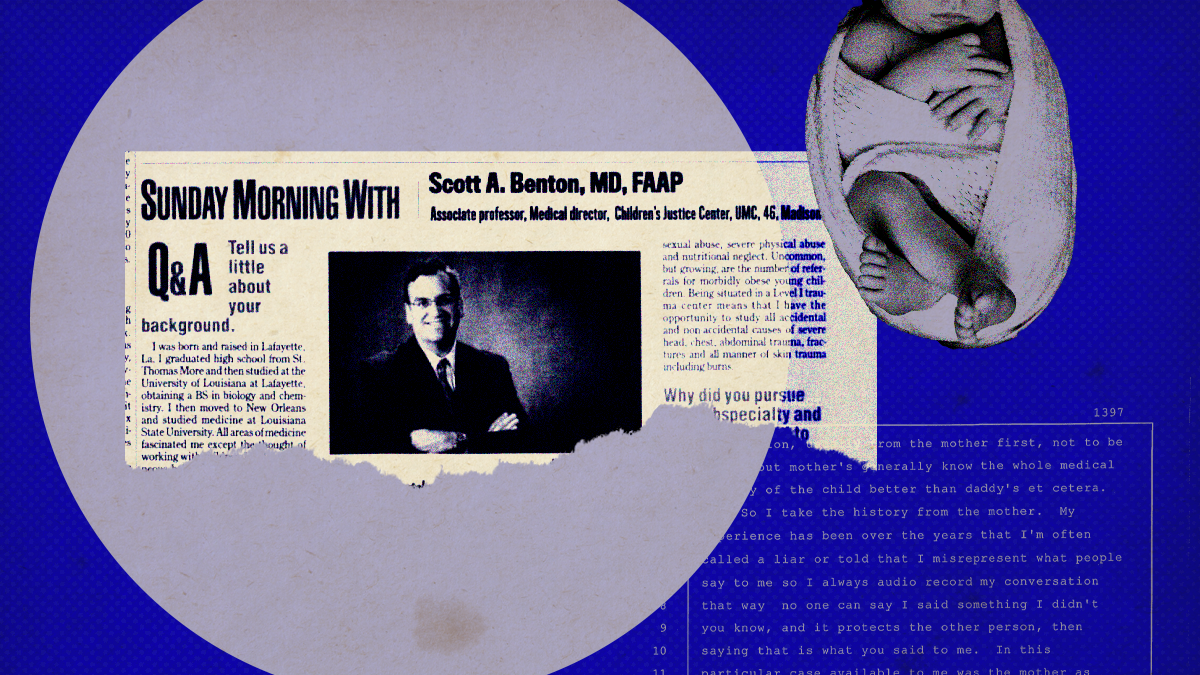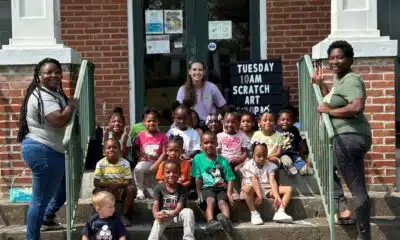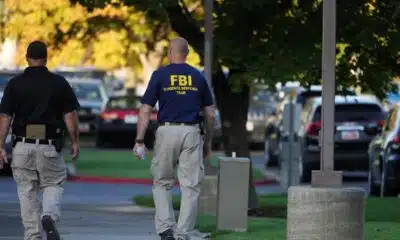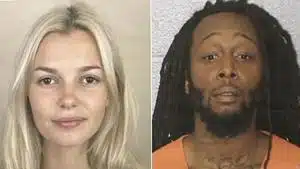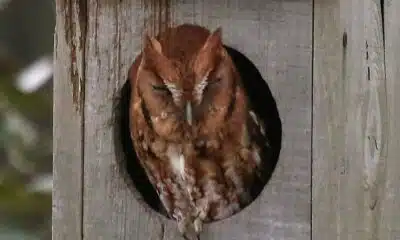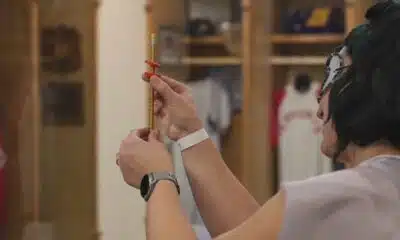Mississippi Today
Mississippi’s child abuse pediatrician works between medicine and the justice system. Can he be objective?
Mississippi’s child abuse pediatrician works between medicine and the justice system. Can he be objective?
This story is the first part in Mississippi Today’s “Shaky Science, Fractured Families” investigation about the state’s only child abuse pediatrician crossing the line from medicine into law enforcement and how his decisions can tear families apart. Read the full series here.
Dr. Scott Benton arrived in Mississippi in 2008 with a mandate to help ensure the University of Mississippi Medical Center stopped getting sued for failing to diagnose child abuse.
Dr. Dan Jones, then UMMC’s vice chancellor for health affairs, had been troubled by the lawsuits following the hospital’s oversights. Benton would later say that Jones wanted to know what the hospital could do to stop this from happening again.
The answer, in part, was Benton, whom Jones recruited to lead a new organization called the Children’s Justice Center. Based at Children’s of Mississippi in Jackson, the center’s mission is to prevent and identify child abuse and neglect.
Right after he arrived, Benton led a two-year effort to develop a surveillance protocol for the entire hospital. Under the protocol, any child admitted to the hospital with trauma – like cuts or broken bones – is screened for potential abuse.
The center was renamed the Children’s Safe Center and now has branches around the state where children can be examined for signs of abuse.
In the 14 years since Benton arrived in Mississippi, he has helped to change the state’s policies, procedures and resources around child abuse. But the success of his center is difficult to measure as the evaluations he conducts are private, and abuse and neglect cases in youth court are sealed, too.
Benton’s career parallels the growth of a unique medical specialty called child abuse pediatrics. Board-certified child abuse pediatricians must demonstrate knowledge of psychology, forensic medicine, neurology and much more. They say their combination of skills makes them uniquely able to determine when abuse has occurred.
Within children’s hospitals around the country, child abuse pediatricians can investigate caregivers they suspect of abuse, make referrals to child protective services, and testify in criminal proceedings. Their work can save children’s lives, and it may be particularly important in Mississippi, which had the country’s highest rate of child deaths due to abuse or neglect in 2021.
But parents who say they’ve been wrongly accused, some doctors in other specialties, and sometimes even child abuse pediatricians themselves say the specialists can be too quick to allege abuse and insufficiently careful in considering other explanations.
And in Mississippi, where he is the only board-certified child abuse pediatrician, Benton has played a particularly powerful role in determining when parents are investigated for child abuse, with limited oversight or consequences for making accusations that are unsubstantiated.
Mississippi Today has uncovered three instances in recent years where parents allege he got it wrong.In each case, there were other explanations or potential medical conditions for the injuries the children exhibited that were not fully vetted by Benton or his team before their caregivers were accused of child abuse.
Parents are often unclear they are being investigated for child abuse when interacting with Benton and his team, they say. Benton said he and his team introduced themselves as “pediatricians from the Children’s Safe Center.”
Benton, through communications officers at the University of Mississippi Medical Center, declined an interview request regarding this investigation from Mississippi Today. The communications officers responded to a limited number of a detailed list of questions and findings Mississippi Today shared with UMMC before publication and received statements from Benton but few direct responses or refutations.
“We walk a fine line between protecting abused children and protecting innocent parents,” Benton said in a statement. “I’m very cognizant of that. I emphasize that fact with staff, and I take that responsibility very seriously.”
In a separate statement, Dr. Mary Taylor, chair of the UMMC Department of Pediatrics, said Benton is “a respected member of our Medical Center staff” who has earned national certifications.
“As medical director of the Children’s Safe Center, Dr. Benton has the difficult role of evaluating the evidence in cases of suspected child abuse in any form and rendering a decision based on his training, many years of experience and deep knowledge of the medical literature. He and his team of trained child abuse specialists provide evidence-supported medical opinions to many governmental agencies that are tasked with ensuring the safety of children. Often times, these children cannot speak for themselves and Dr. Benton’s medical opinions are one part of a defined system of agencies that examine the totality of available evidence about suspected child abuse with the goal of protecting children from exposure to abusive environments.
“UMMC supports the critical work Dr. Benton does through the Children’s Safe Center and values the service he provides to the state as the only board-certified child abuse pediatrician.”
A pediatrician’s path evolves with a new medical specialty
Benton started his medical career in the 1990s, in his native Louisiana. His path in medicine evolved in tandem with the growth of a new medical specialty in child abuse.
During his second year of residency, he completed a clerkship in “pediatric forensic medicine” — what is now called child abuse pediatrics. He then took a job in pediatrics at the Louisiana State University medical school, which included training at the Center for Child Protection in San Diego, now called the Chadwick Center, and elsewhere.
Benton found himself at the center of a small but increasingly influential field. He became one of the charter members of the Ray E. Helfer Society, an organization of physicians who work on preventing and diagnosing child abuse.
“There’s only a few of us that do this,” he once explained in a deposition. “We recognized that this was building up a body of knowledge that was greater than that of just a general pediatrician… We started thinking that we could possibly have a subspecialty in the late 90s, early 2000s.”
Benton and colleagues applied to the American Board of Pediatrics for the designation.
They argued they offered something unique: an ability to draw together insights from a range of specialties in order to diagnose a crime.
“You have to first show the fund of knowledge, what the factual bases are, you have to compile a full literature, as in any other subspecialty,” Benton said in a 2017 deposition.
In 2009, the board offered a certification exam for the first time. Benton holds certificate number 20 in child abuse pediatrics. Today, there are 330 board-certified child abuse pediatricians across the United States.
Around the country, child abuse pediatricians report suspected abuse and neglect to child protective services, and then may provide evidence to help the state remove a child from his or her family’s custody. In some states, CPS also provides funding for their work.
Their credentials lend their determinations substantial weight in the eyes of CPS caseworkers, police, prosecutors and judges: A Marshall Project analysis found that reports of suspected abuse by medical professionals to child welfare agencies are 40% likelier to be substantiated than reports by non-medical professionals.
A ProPublica and NBC Investigation found thatonly about 5% of child welfare investigationsnationwide lead to determinations of physical or sexual abuse.
And around the country, Black children are disproportionately likely to be investigated. One2017 studyfound that half of all Black children in the US experience a CPS investigation by age 18, compared to less than a quarter of white children.
The three families featured in this series are white.
Benton has testified that his job requires him to “provide service to child protection, law enforcement and Mississippi prosecutors.” He started providing expert testimony soon after he began his medical career, first testifying in a case in September 1996.
Critics of this medical specialty — including defense attorneys and some doctors in other fields — argue that child abuse pediatricians are susceptible to bias because of their frequent and close interactions with law enforcement.
At one conference on shaken baby syndrome and abusive head trauma, a speaker presented defense expert testimony alongside a picture of Pinocchio. The event concluded with doctors and prosecutors singing a song mocking skeptics of the diagnosis to the tune of, “If I only had a brain.”
State public defender André de Gruy drew a parallel between child abuse pediatricians and medical examiners housed in the Department of Public Safety — both are scientists who say their work is objective, but who work closely with law enforcement and prosecutors.That may shape their interpretations.
“I think (Benton) is going to find abuse because he has a bias towards finding abuse, in my opinion,” de Gruy said. “In most of the cases, I suspect he finds abuse and there is abuse. But I think that there are the cases, the close calls, which is where the trouble comes in, where he’s going to find abuse but someone else will look at it and not.”
Child abuse pediatricians and many colleagues in other medical specialties and fields like law enforcement and social work see their work as essential to identifying and intervening in cases of abuse. They say they follow the evidence.
Dr. Christopher Greeley, who leads the child abuse pediatrics team at Texas Children’s Hospital, told NBC News that he and colleagues always work to rule out alternative explanations before making an accusation of abuse.
“We don’t say, ‘Eh, take the kid away,’ in a sort of flippant manner,” he told the news station.
Greeley, a past president of the Helfer Society who also chairs its public relations committee, did not respond to emails from Mississippi Today seeking an interview.
Mississippi’s only child abuse pediatrician builds a new surveillance system
When Benton moved to Mississippi in 2008, the state was under pressure to improve protections for abused children. A federal lawsuit in 2004 charged that the state was failing to prevent abuse and neglect of kids in the foster system. In response, the Legislature created the Children’s Justice Center in 2007, aiming to standardize and professionalize investigations of suspected abuse.
In an interview with the Clarion-Ledger in 2012, Benton explained that while working in New Orleans, he had developed one of the country’s “largest and (most) innovative child abuse programs” with the Audrey Hepburn Children At-Risk Evaluation Center. But in 2005, Hurricane Katrina destroyed most of his family’s material possessions and left them displaced from their home.
“It was during this time that I was recruited to be the medical director of the (UMMC) center and met with former Gov. Haley Barbour, now Gov. Phil Bryant, numerous legislators, then-University of Mississippi Medical Center Chancellor Dr. Dan Jones, and Pediatrics Chair Dr. Bev Evans,” he told the paper. “This solidified for me that Mississippi was serious about developing an academic forensic medical response for abused and neglected children.”
Benton’s UMMC colleagues welcomed his arrival. Dr. Christopher Blewett, a pediatric surgeon who now works in Missouri, told Mississippi Today that before Benton came to the hospital, the bulk of the work to investigate child abuse and provide evidence during criminal proceedings fell to doctors like him because they were the ones who would see and operate on children with physical trauma sustained from abuse.
Benton, who also lived next door to Blewett when they were both in Mississippi, was “a godsend,” Blewett said. His training equipped him to recognize patterns of injury that could point to abuse, and he largely took over the work of testifying in court.
Blewett said he completely trusts Benton, whom he describes as devoted to his work. He recalled phone calls at 10 p.m. to discuss whether to release a family from the hospital or keep them another day or two so Benton, who frequently travels to testify in court, could interview them in person.
“Obviously it takes a special person to do that work,” Blewett said. “This is just short of like an SVU detective in many cases. It can be pretty grim at times.”
Benton made a similar point during his Clarion-Ledger interview. Other specialists are reluctant “to get involved with the medico-legal evaluation of children,” he told the paper.
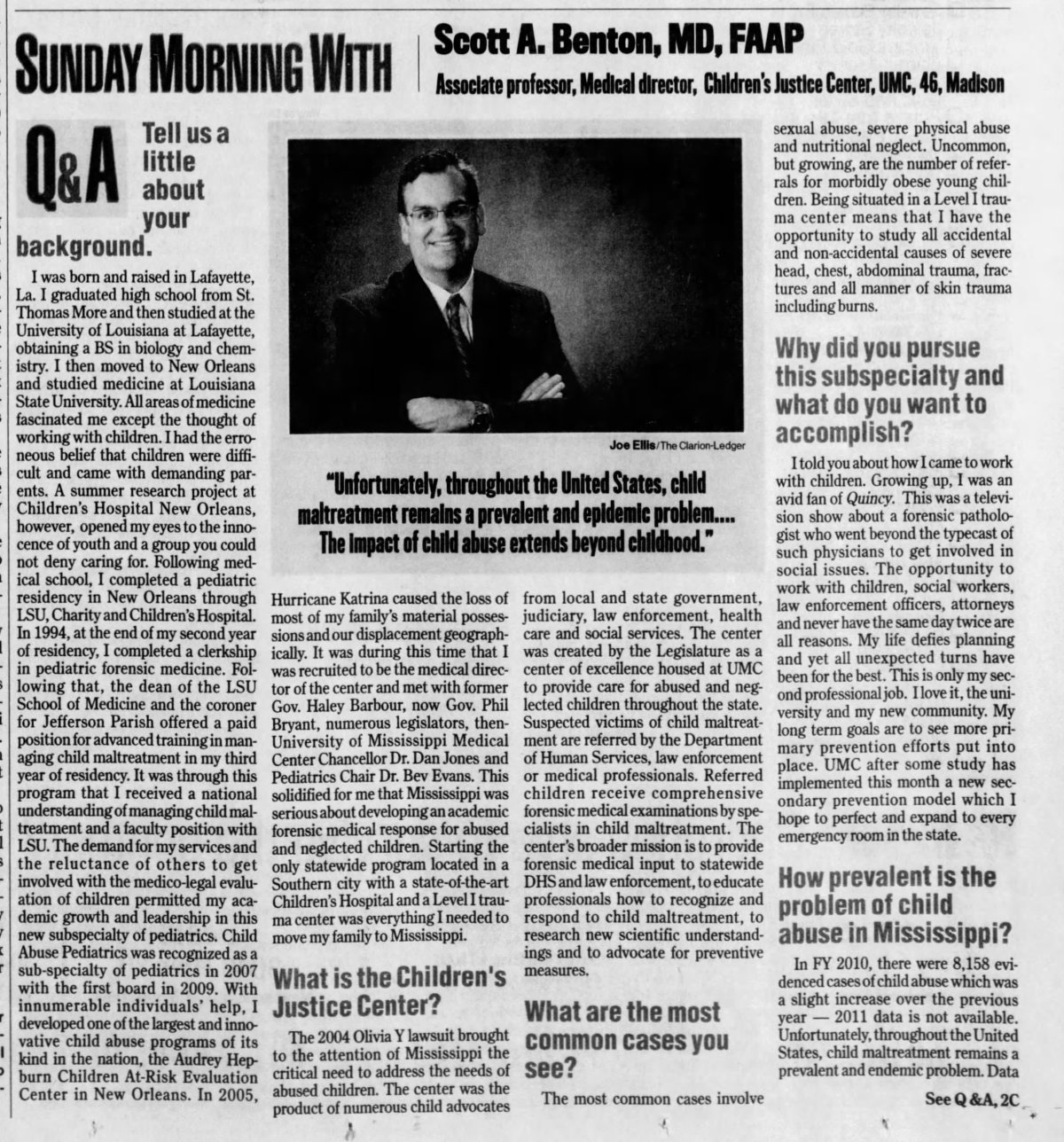
In Mississippi, rates of child maltreatment are higher than the national average. And in recent years, the number of child deaths reportedly caused by abuse and neglect in Mississippi has risen, from 15 deaths in 2007 to 38 in 2020 and 49 in 2021. That year — the most recent year for which such data is available — the state had the country’s highest rate of such deaths, at 7.07 per 100,000 children, compared to a national average of 2.46.
Today, Benton sees patients at the hospital suffering from severe trauma, supervises an outpatient sexual abuse clinic, and examines kids. Child Protective Services, police, lawyers, psychiatrists, pediatricians and emergency rooms refer children to the center.
Benton told Mississippi Today that the state’s child abuse hotline receives about 30,000 calls annually, and about a third of these are substantiated. The Safe Center saw 2,400 children last year, he said.
He also implemented a “high-risk surveillance system,” under which Benton’s team evaluates any child who comes to UMMC with certain injuries or symptoms. The triggers for such evaluation are wide-ranging, according to procedures obtained by Mississippi Today. They include any bone fractures, burns including “significant sunburns” and “all trauma warranting admission.”
Benton’s mandate was to ensure hospital staff missed no warning signs for abuse.
“The general teaching previous to that time was not adequate to keep an open mind about whether parents or caregivers could be abusers,” he told attorneys for a defendant in a fatal child abuse case during a deposition.
The stakes are high on either side, he said. While an incorrect accusation can have serious consequences for a parent, failing to detect abuse can put a child’s life at risk.
“I do think we try to get it right, and I’m not aware that there’s any overcalling going on,” he said. “Nationally, if you look at the statistics on the epidemiology, it’s always the opposite direction. We just take the person at hand and don’t go any further.”
Benton has emphasized that the protocol for reviewing cases he implemented provides protections for caregivers and a systematic exploration of potential causes of injury.
“Before I came here, anyone they thought who had injured the kid was kicked out of the hospital,” he told a group of Mississippi public defenders a decade ago in a recorded presentation Mississippi Today reviewed.
“That was part of their protocol. And I said, ‘Alright, who am I supposed to get the history from? Who am I supposed to figure out whether there’s a medical explanation for… some of these bleeding findings? So we quickly reversed that… We had to have multiple conferences to explain to them a concept you already understand: innocent until proven guilty … We’ve got several kids where we’ve made medical diagnoses where the nurses were like ‘Oh my God, I was ready to crucify this parent,’ and the kid turned out to have a (inaudible) aneurysm in their brain that was mimicking head trauma.”
In an email to Mississippi Today, Benton said the surveillance system does not give him total decision-making power in every case.
“The high-risk surveillance system is a review of other professionals (sic) work and is not an independent investigation by the children’s safe center,” he wrote. “However, if I feel by review that a case should be reported for state CPS investigation, I contact the medical provider involved in the case or the child’s primary care provider and discuss my concerns with them. It is up to them at that point whether they agree with my concerns. This interaction is documented in the child’s medical record.”
It is not clear whether Benton meant that the other medical providers in the case must make the decision to involve CPS. He and UMMC communications officials repeatedly declined Mississippi Today’s interview requests and responded directly to only a small number of questions sent via email.
When Mississippi Today asked for clarification on this particular point, UMMC did not respond.
The law gives doctors and law enforcement an incentive to allege abuse any time it appears possible. It protects people who make a good faith report of abuse or neglect from any liability if they get it wrong, while failure to report can lead to a fine and up to a year in prison.
But Benton has said keeping “an open mind” does not mean jumping to conclusions about whether abuse has occurred. The Clarion-Ledger asked him what adults should do if they suspect a child is being abused.
“My first advice would be to not overreact,” Benton said. “Listen to the child.”
He encouraged “passive listening,” in which a caregiver repeats back what a child says in a questioning tone.
“Then be silent and wait for further response,” he said.
Once you suspect abuse, call the state child abuse hotline.
He also pointed to social factors that can contribute to abuse, like caregivers being out of work, displaced, or otherwise stressed. And most physical abuse, he said, is related to “inadequate parenting skills coupled with frustration.” Benton added that stressful situations involving feeding, crying and misbehavior could cause “an otherwise sane caregiver to lose patience.”
As the doctor charged with accusing caregivers of child abuse, Benton is acquainted with angry denials and furious criticism.
“My experience has been over the years that I’m often called a liar or told that I misrepresent what people say to me, so I always audio record my conversations,” he said on the stand during a 2014 trial. “That way no one can say I said something I didn’t, you know, and it protects the other person.”
Two of the mothers featured in this series attempted to obtain the recordings of their conversations with Benton in the hospital but were unable. One was told she must have an attorney, and the other could not get in touch with an employee of the Children’s Safe Center, where the recordings are housed.
A controversial diagnosis
Child abuse pediatricians like Benton are trained to recognize signs of abusive head trauma, formerly known as shaken baby syndrome (SBS), and often provide expert testimony in trials. For decades, three findings were considered indicative of the syndrome: subdural bleeding, retinal bleeding and swelling of the brain.
Questions about abusive head trauma comprise 10% of the certifying exam for child abuse pediatricians, more than almost any other topic on the exam. (Child fatalities and musculoskeletal injuries comprise 4% and 8% of the exam, respectively.)
Thousands of people in the U.S. have been convicted of shaking a baby to death since the 1970s.
Yet the scientific bases of the diagnosis are increasingly coming under question. A 1987 study reviewed 48 cases of “shaken baby syndrome” in the Philadelphia area and found that of the 13 fatalities, all had signs of impact, too. Biomechanical studies, including one published in 2022, have also found that forceful shaking of an infant will cause injury to the neck before the brain, although neck injuries have not been considered diagnostic of the syndrome.
Retinal hemorrhage, once regarded as conclusive proof of the syndrome, has been seen in infants who died from causes like meningitis or an obstructed airway.
Researchers have also found that short falls can generate much more force than shaking, and a 2001 study that looked at children’s falls from playground equipment — but did not include infants — found that short falls could cause death, as well as retinal bleeding, and could be preceded by a lucid interval.
Critics of these studies say biomechanical models are not real infants. It’s impossible to test the theory on babies.
The dispute over the science plays out in courtrooms around the country. The Washington Post reported in 2015 that at least 16 people in the U.S. had overturned their convictions since 2001, as judges determined that new information created reasonable doubt as to their guilt.
Indeed, a 2018 “consensus statement” published in the journal Pediatric Radiology was written in response to what the authors described as “speculative theories that cannot be reconciled with generally accepted medical literature” now being advanced during trials. The statement explained the injuries could be caused by shaking alone, shaking and impact, or impact alone.
“There is no controversy concerning the medical validity of the existence of AHT, with multiple components including subdural hematoma, intracranial and spinal changes, complex retinal hemorrhages, and rib and other fractures that are inconsistent with the provided mechanism of trauma,” the statement said.
The idea that shaking alone could cause fatal injuries in infants was introduced in 1971 by British pediatric neurosurgeon Norman Guthkelch. He published a two-page paper in the British Medical Journal titled “Infantile Subdural Haematoma and its Relationship to Whiplash Injuries” that established the link between shaking and head injuries in infants.
With his research, Guthkelch was attempting to solve a problem he kept encountering in his practice. Small children showed up to the hospital where he worked with bleeding on the surface of their brains, but with no broken bones or bruises to indicate they had been abused. He reviewed 23 cases of alleged child abuse, with subdural hematoma in 13. In five of those cases, there was no external sign of injury, and Guthkelch theorized their injuries could have been caused by shaking.
In the years that followed, doctors were trained to strongly suspect abuse if children came in with subdural hematomas, brain swelling and bleeding in the retinas. A guide to investigating child abuse published by the Justice Department in the late 1990s called retinal hemorrhage in babies “for all practical purposes, conclusive evidence of shaken baby syndrome in the absence of a good explanation.”
Prosecutors have won convictions with no eyewitnesses to the alleged shaking and no theory as to why the defendant would shake the infant, with little evidence beyond a doctor’s diagnosis based on a supposedly definitive set of symptoms.
For prosecutors, shaken baby syndrome provides a tidy narrative: It is “a medical diagnosis for murder,” as Deborah Tuerkheimer, a law professor at Northwestern University and expert on shaken baby syndrome convictions put it in her 2009 article in the Washington University Law Review.
In 1996, Wisconsin day care provider Audrey Edmunds was convicted of murder in the death of a 7-month-old baby in her care. The prosecution’s argument hinged on what was then regarded as medical fact: The presence of retinal hemorrhage, subdural bleeding and brain swelling — plus the absence of another explanation for those findings — provided a powerful indication the baby had been shaken. And the timing of the baby’s decline purportedly proved Edmunds was responsible. Her defense did not challenge the science around shaken baby syndrome.
In 2008, however, Edmunds was granted a new trial. A judge determined that “a shift in mainstream medical opinion” on shaken baby syndrome meant a new jury could have reasonable doubt as to her guilt. The district attorney dropped the charges, and Edmunds was freed.
The outcome cast a spotlight on the controversy brewing over the diagnosis.
Guthketlch himself went on to express horror that prosecutors were using the diagnosis he had popularized to convict parents and caregivers when there was no other evidence of abuse. He spent the final years of his life reviewing controversial SBS cases and noted a high proportion of the children in them had a history of underlying illnesses or conditions that could explain their injuries, but that these issues were rarely considered in medical reports.
“While society is rightly shocked by any assault on its weakest members and demands retribution, there seem to have been instances in which both medical science and the law have gone too far in hypothesizing and criminalizing alleged acts of violence in which the only evidence has been the presence of the classic triad or even just one or two of its elements,” Gulthkelch wrote in a paper published in the Houston Journal of Health Law & Policy in 2012. “Often, there seems to have been inadequate inquiry into the possibility that the picture resulted from natural causes.”
In 2009, the American Association of Pediatrics issued a policy statement recommending doctors stop using the term “shaken baby syndrome” and instead use “abusive head trauma,” a terminology shift to describe the clinical findings instead of the mechanism of injury. The statement said injuries could be caused by shaking, impact, or some combination of both.
To critics, the name change presents an obvious problem: If the injuries can also be caused by impact, and defendants’ accounts of what happened describe an accidental impact, how can doctors be certain the injuries were caused by abuse?
Child abuse pediatricians say the science of abusive head trauma is sound, and that when a child has a specific set of symptoms, a different diagnosis is unlikely. They argue that critics of the diagnosis are putting kids at risk.
“The controversy exists among just a few individuals predominantly traveling on the defense circuit, some of whom are making $600,000 a year providing testimony that is factually scientifically counterintuitive, counter science,” Benton said in one sentencing hearing in 2018, “so I wouldn’t call that controversy when the people — I mean, you’re making it as if it’s balanced. Is it controversy? Yes, we’re very upset when somebody misuses science in the furtherance of a child who in our estimation has been abused.”
Reading a newspaper, finding a homicide
When Benton arrived in Mississippi, he understood the Children’s Justice Center had a decade of guaranteed funding thanks to the state’s $100 million settlement with WorldCom Inc., a telecommunications company that collapsed in a multibillion-dollar fraud scandal. It turned out that was a drastic overestimate. Instead, he had a few years’ worth of funding, and he had to look for other revenue streams.
That was how the case of a man named Jeffrey Havard first came across his desk. Havard was convicted of capital murder in the death of his girlfriend’s 6-month-old daughter in 2002, and sentenced to death. The prosecution’s theory was that Havard had sexually assaulted the baby and shaken her to death.
The director of the center read a story in the Clarion Ledger about Havard’s case by longtime investigative reporter Jerry Mitchell. The state Supreme Court had just rejected an appeal from Havard, but Mitchell had interviewed a pathologist who reviewed medical records and concluded there was no evidence of sexual assault or of homicide, and that the baby’s injuries were consistent with Havard’s claim that he had dropped her.
The center’s director thought Benton could potentially apply his expertise to the case. Helping to right an injustice might boost name recognition and funding for the center.
But Benton didn’t see an injustice.
“As I read the facts as put forth in the above sources,” he wrote to Mitchell on March 15, 2012, referring to the newspaper article and the state Supreme Court decision upholding Havard’s conviction, “I believe they support a homicide.”
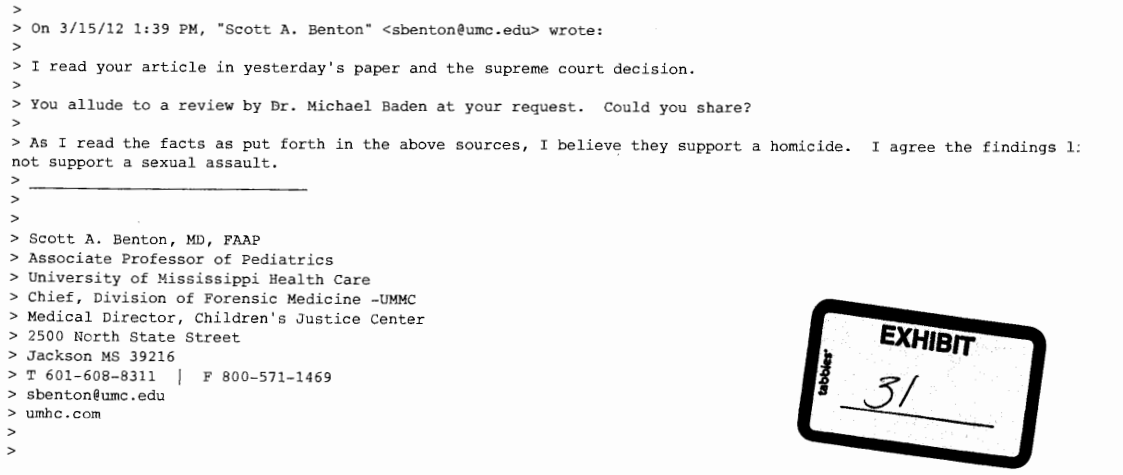
Mississippi Today health editor Kate Royals contributed to this report.
Editor’s note: Kate Royals, Mississippi Today’s community health editor since January 2022, worked as a writer/editor for UMMC’s Office of Communications from November 2018 through August 2020, writing press releases and features about the medical center’s schools of dentistry and nursing.
This article first appeared on Mississippi Today and is republished here under a Creative Commons license.
Mississippi Today
Mississippi prepares for another execution
The Mississippi Supreme Court has set the execution of a man who kidnapped and murdered a 20-year-old community college student in north Mississippi 30 years ago.
Charles Ray Crawford, 59, is set to be executed Oct. 15 at the Mississippi State Penitentiary at Parchman, after multiple requests by the attorney general’s office.
Eight justices joined the majority opinion to set the execution, concluding that Crawford has exhausted all state and federal legal remedies. Mississippi Supreme Court Justice T. Kenneth Griffis Jr. wrote the Friday opinion. Justice David Sullivan did not participate.
However, Kristy Noble with the Mississippi Office of Capital Post-Conviction Counsel released a statement saying it will file another appeal with the U.S. Supreme Court.
“”Mr. Crawford’s inexperienced trial counsel conceded his guilt to the jury — against Mr.
Crawford’s timely and repeated objections,” Noble said in the statement. “Mr. Crawford told his counsel to pursue a not guilty verdict. Counsel did just the opposite, which is precisely what the U.S. Supreme Court says counsel cannot do,” Noble said in the statement.
“A trial like Mr. Crawford’s – one where counsel concedes guilt over his client’s express wishes – is essentially no trial at all.”
Last fall, Crawford’s attorneys asked the court not to set an execution date because he hadn’t exhausted appeal efforts in federal court to challenge a rape conviction that is not tied to his death sentence. In June, the U.S. Supreme Court declined to take up Crawford’s case.
A similar delay occurred a decade ago, when the AG’s office asked the court to reset Crawford’s execution date, but that was denied because efforts to appeal his unrelated rape conviction were still pending.
After each unsuccessful filing, the attorney general’s office asked the Mississippi Supreme Court to set Crawford’s execution date.
On Friday, the court also denied Crawford’s third petition for post-conviction relief and a request for oral argument. It accepted the state’s motion to dismiss the petition. Seven justices concurred and Justice Leslie King concurred in result only. Again, Justice Sullivan did not participate.
Crawford was convicted and sentenced to death in Lafayette County for the 1993 rape and murder of North Mississippi Community College student Kristy Ray.
Days before he was set to go to trial on separate aggravated assault and rape charges, he kidnapped Ray from her parents’ Tippah County home, leaving ransom notes. Crawford took Ray to an abandoned barn where he stabbed her, and his DNA was found on her, indicating he sexually assaulted her, according to court records.
Crawford told police he had blackouts and only remembered parts of the crime, but not killing Ray. Later he admitted “he must of killed her” and led police to Ray’s body, according to court records.
At his 1994 trial he presented an insanity defense, including that he suffered from psychogenic amnesia – periods of time lapse without memory. Medical experts who provided rebuttal testimony said Crawford didn’t have psychogenic amnesia and didn’t show evidence of bipolar illness.
The last person executed in Mississippi was Richard Jordan in June, previously the state’s oldest and longest serving person on death row.
There are 36 people on death row, according to records from the Mississippi Department of Corrections.
Update 9/15/25: This story has been updated to include a response from the Mississippi Office of Capital Post-Conviction Counsel
This article first appeared on Mississippi Today and is republished here under a Creative Commons Attribution-NoDerivatives 4.0 International License.
The post Mississippi prepares for another execution appeared first on mississippitoday.org
Note: The following A.I. based commentary is not part of the original article, reproduced above, but is offered in the hopes that it will promote greater media literacy and critical thinking, by making any potential bias more visible to the reader –Staff Editor.
Political Bias Rating: Centrist
The article presents a factual and balanced account of the legal proceedings surrounding a scheduled execution in Mississippi. It includes perspectives from both the state’s attorney general’s office and the defense counsel, without using emotionally charged language or advocating for a particular political stance. The focus on legal details and court decisions reflects a neutral, informative approach typical of centrist reporting.
Mississippi Today
Presidents are taking longer to declare major natural disasters. For some, the wait is agonizing
TYLERTOWN — As an ominous storm approached Buddy Anthony’s one-story brick home, he took shelter in his new Ford F-250 pickup parked under a nearby carport.
Seconds later, a tornado tore apart Anthony’s home and damaged the truck while lifting it partly in the air. Anthony emerged unhurt. But he had to replace his vehicle with a used truck that became his home while waiting for President Donald Trump to issue a major disaster declaration so that federal money would be freed for individuals reeling from loss. That took weeks.
“You wake up in the truck and look out the windshield and see nothing. That’s hard. That’s hard to swallow,” Anthony said.
Disaster survivors are having to wait longer to get aid from the federal government, according to a new Associated Press analysis of decades of data. On average, it took less than two weeks for a governor’s request for a presidential disaster declaration to be granted in the 1990s and early 2000s. That rose to about three weeks during the past decade under presidents from both major parties. It’s taking more than a month, on average, during Trump’s current term, the AP found.
The delays mean individuals must wait to receive federal aid for daily living expenses, temporary lodging and home repairs. Delays in disaster declarations also can hamper recovery efforts by local officials uncertain whether they will receive federal reimbursement for cleaning up debris and rebuilding infrastructure. The AP collaborated with Mississippi Today and Mississippi Free Press on the effects of these delays for this report.
“The message that I get in the delay, particularly for the individual assistance, is that the federal government has turned its back on its own people,” said Bob Griffin, dean of the College of Emergency Preparedness, Homeland Security and Cybersecurity at the University at Albany in New York. “It’s a fundamental shift in the position of this country.”
The wait for disaster aid has grown as Trump remakes government
The Federal Emergency Management Agency often consults immediately with communities to coordinate their initial disaster response. But direct payments to individuals, nonprofits and local governments must wait for a major disaster declaration from the president, who first must receive a request from a state, territory or tribe. Major disaster declarations are intended only for the most damaging events that are beyond the resources of states and local governments.
Trump has approved more than two dozen major disaster declarations since taking office in January, with an average wait of almost 34 days after a request. That ranged from a one-day turnaround after July’s deadly flash flooding in Texas to a 67-day wait after a request for aid because of a Michigan ice storm. The average wait is up from a 24-day delay during his first term and is nearly four times as long as the average for former Republican President George H.W. Bush, whose term from 1989-1993 coincided with the implementation of a new federal law setting parameters for disaster determinations.
The delays have grown over time, regardless of the party in power. Former Democratic President Joe Biden, in his last year in office, averaged 26 days to declare major disasters — longer than any year under former Democratic President Barack Obama.
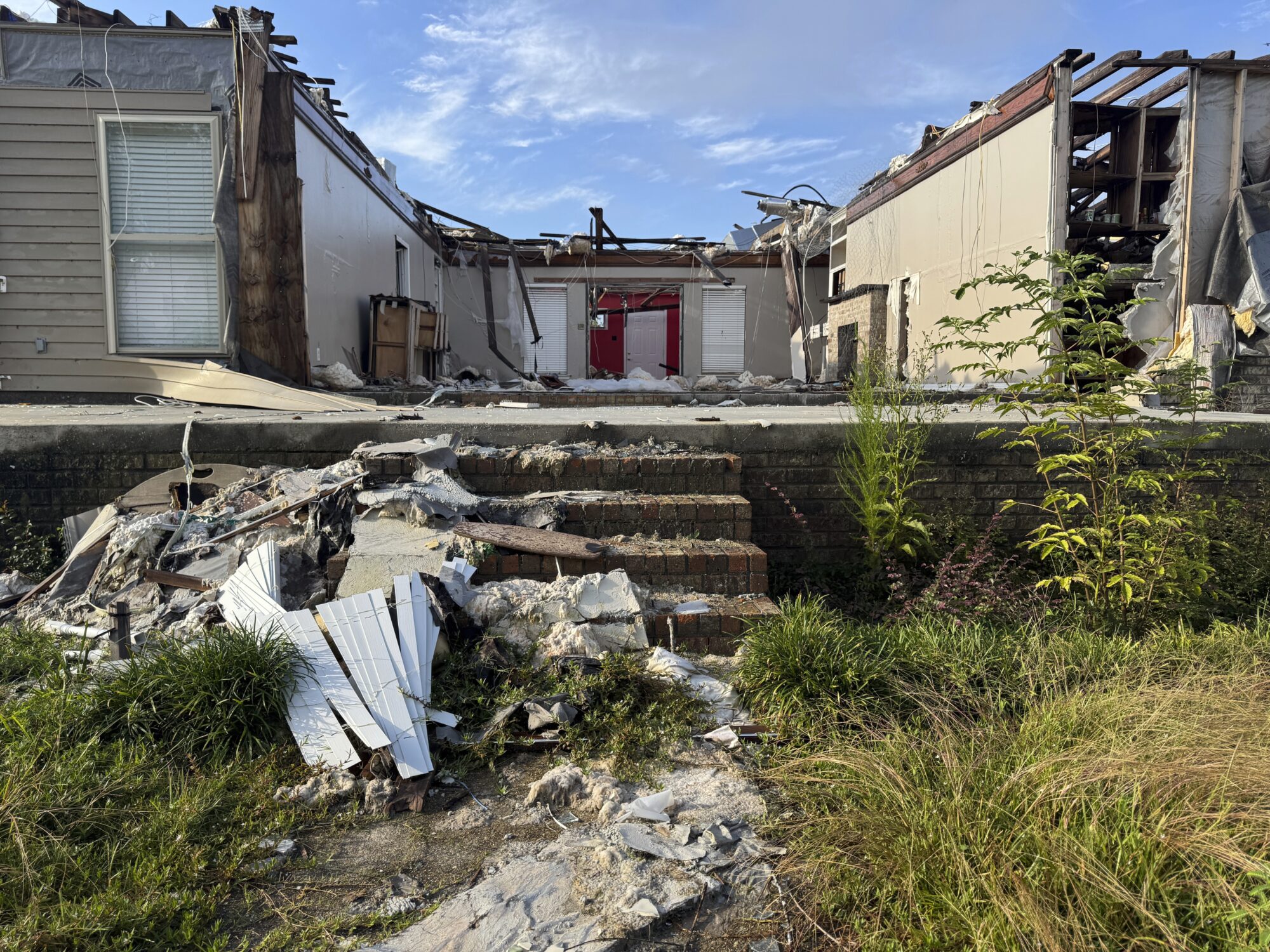
FEMA did not respond to the AP’s questions about what factors are contributing to the trend.
Others familiar with FEMA noted that its process for assessing and documenting natural disasters has become more complex over time. Disasters have also become more frequent and intense because of climate change, which is mostly caused by the burning of fuels such as gas, coal and oil.
The wait for disaster declarations has spiked as Trump’s administration undertakes an ambitious makeover of the federal government that has shed thousands of workers and reexamined the role of FEMA. A recently published letter from current and former FEMA employees warned the cuts could become debilitating if faced with a large-enough disaster. The letter also lamented that the Trump administration has stopped maintaining or removed long-term planning tools focused on extreme weather and disasters.
Shortly after taking office, Trump floated the idea of “getting rid” of FEMA, asserting: “It’s very bureaucratic, and it’s very slow.”
FEMA’s acting chief suggested more recently that states should shoulder more responsibility for disaster recovery, though FEMA thus far has continued to cover three-fourths of the costs of public assistance to local governments, as required under federal law. FEMA pays the full cost of its individual assistance.
Former FEMA Administrator Pete Gaynor, who served during Trump’s first term, said the delay in issuing major disaster declarations likely is related to a renewed focus on making sure the federal government isn’t paying for things state and local governments could handle.
“I think they’re probably giving those requests more scrutiny,” Gaynor said. “And I think it’s probably the right thing to do, because I think the (disaster) declaration process has become the ‘easy button’ for states.”
The Associated Press on Monday received a statement from White House spokeswoman Abigail Jackson in response to a question about why it is taking longer to issue major natural disaster declarations:
“President Trump provides a more thorough review of disaster declaration requests than any Administration has before him. Gone are the days of rubber stamping FEMA recommendations – that’s not a bug, that’s a feature. Under prior Administrations, FEMA’s outsized role created a bloated bureaucracy that disincentivized state investment in their own resilience. President Trump is committed to right-sizing the Federal government while empowering state and local governments by enabling them to better understand, plan for, and ultimately address the needs of their citizens. The Trump Administration has expeditiously provided assistance to disasters while ensuring taxpayer dollars are spent wisely to supplement state actions, not replace them.”
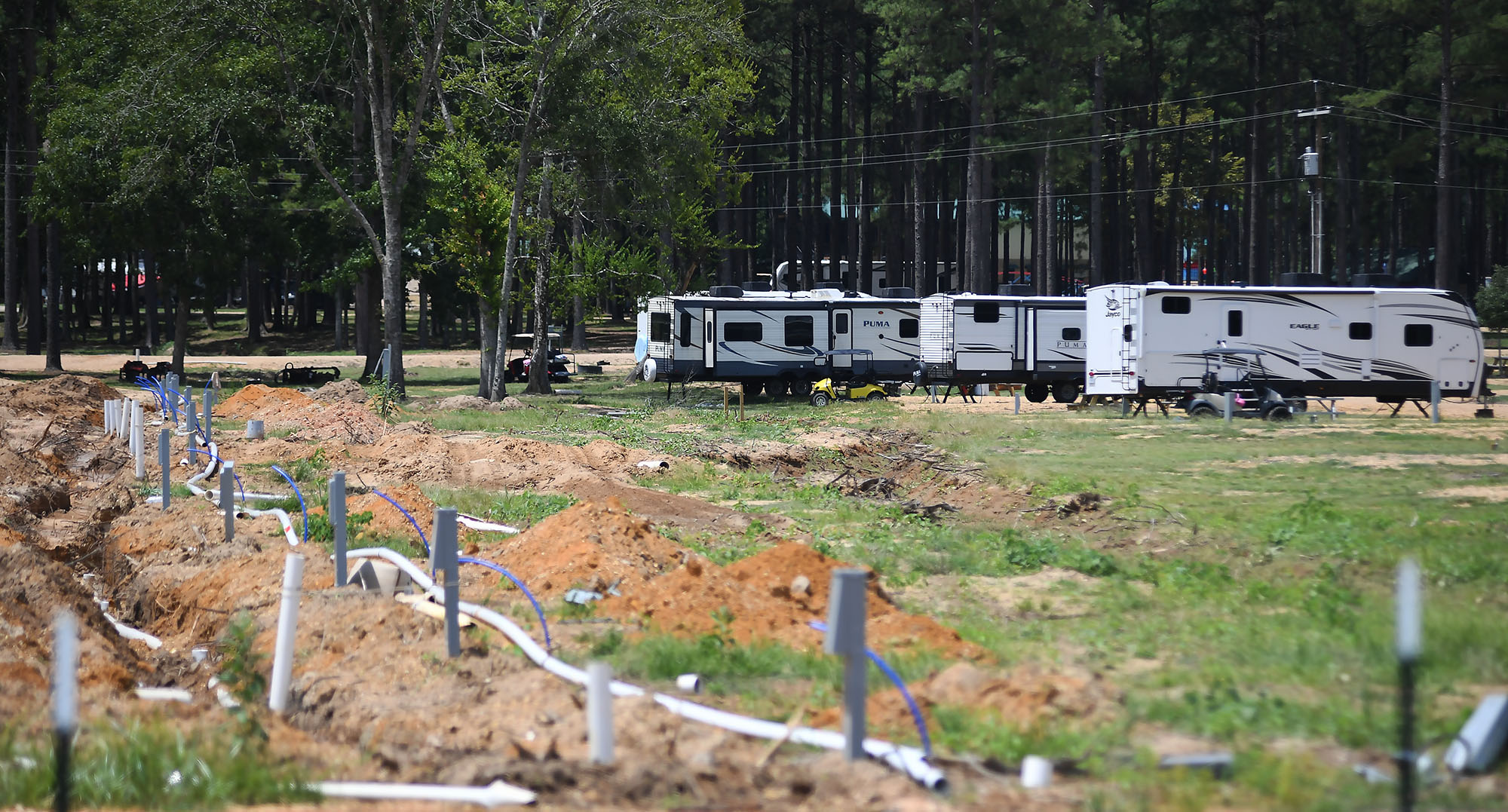
In Mississippi, frustration festered during wait for aid
The tornado that struck Anthony’s home in rural Tylertown on March 15 packed winds up to 140 mph. It was part of a powerful system that wrecked homes, businesses and lives across multiple states.
Mississippi’s governor requested a federal disaster declaration on April 1. Trump granted that request 50 days later, on May 21, while approving aid for both individuals and public entities.
On that same day, Trump also approved eight other major disaster declarations for storms, floods or fires in seven other states. In most cases, more than a month had passed since the request and about two months since the date of those disasters.
If a presidential declaration and federal money had come sooner, Anthony said he wouldn’t have needed to spend weeks sleeping in a truck before he could afford to rent the trailer where he is now living. His house was uninsured, Anthony said, and FEMA eventually gave him $30,000.
In nearby Jayess in Lawrence County, Dana Grimes had insurance but not enough to cover the full value of her damaged home. After the eventual federal declaration, Grimes said FEMA provided about $750 for emergency expenses, but she is now waiting for the agency to determine whether she can receive more.

“We couldn’t figure out why the president took so long to help people in this country,” Grimes said. “I just want to tie up strings and move on. But FEMA — I’m still fooling with FEMA.”
Jonathan Young said he gave up on applying for FEMA aid after the Tylertown tornado killed his 7-year-old son and destroyed their home. The process seemed too difficult, and federal officials wanted paperwork he didn’t have, Young said. He made ends meet by working for those cleaning up from the storm.
“It’s a therapy for me,” Young said, “to pick up the debris that took my son away from me.”
Historically, presidential disaster declarations containing individual assistance have been approved more quickly than those providing assistance only to public entities, according to the AP’s analysis. That remains the case under Trump, though declarations for both types are taking longer.
About half the major disaster declarations approved by Trump this year have included individual assistance.
Some people whose homes are damaged turn to shelters hosted by churches or local nonprofit organizations in the initial chaotic days after a disaster. Others stay with friends or family or go to a hotel, if they can afford it.
But some insist on staying in damaged homes, even if they are unsafe, said Chris Smith, who administered FEMA’s individual assistance division under three presidents from 2015-2022. If homes aren’t repaired properly, mold can grow, compounding the recovery challenges.
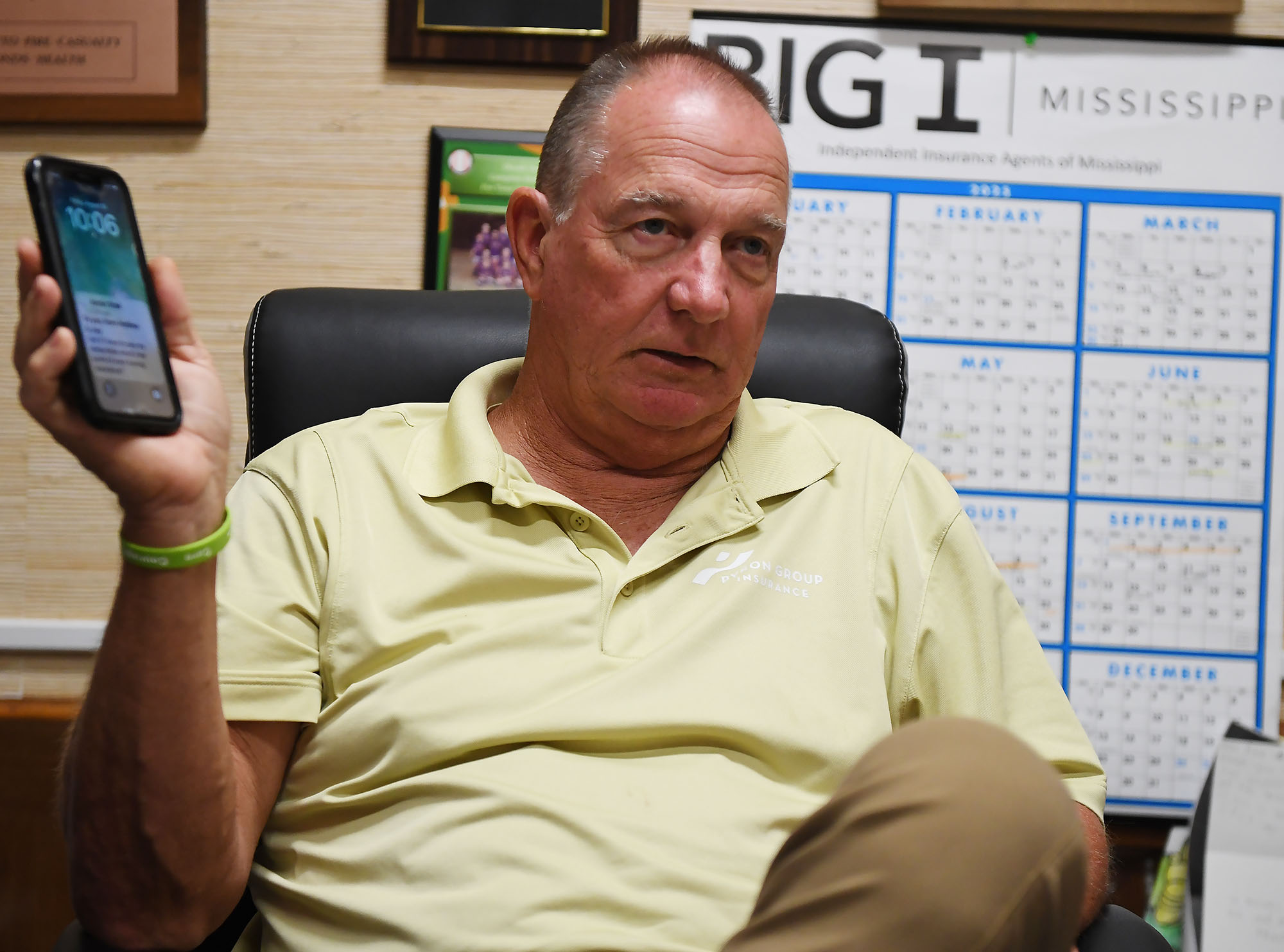
That’s why it’s critical for FEMA’s individual assistance to get approved quickly — ideally, within two weeks of a disaster, said Smith, who’s now a disaster consultant for governments and companies.
“You want to keep the people where they are living. You want to ensure those communities are going to continue to be viable and recover,” Smith said. “And the earlier that individual assistance can be delivered … the earlier recovery can start.”
In the periods waiting for declarations, the pressure falls on local officials and volunteers to care for victims and distribute supplies.
In Walthall County, where Tylertown is, insurance agent Les Lampton remembered watching the weather news as the first tornado missed his house by just an eighth of a mile. Lampton, who moonlights as a volunteer firefighter, navigated the collapsed trees in his yard and jumped into action. About 45 minutes later, the second tornado hit just a mile away.
“It was just chaos from there on out,” Lampton said.
Walthall County, with a population of about 14,000, hasn’t had a working tornado siren in about 30 years, Lampton said. He added there isn’t a public safe room in the area, although a lot of residents have ones in their home.
Rural areas with limited resources are hit hard by delays in receiving funds through FEMA’s public assistance program, which, unlike individual assistance, only reimburses local entities after their bills are paid. Long waits can stoke uncertainty and lead cost-conscious local officials to pause or scale-back their recovery efforts.
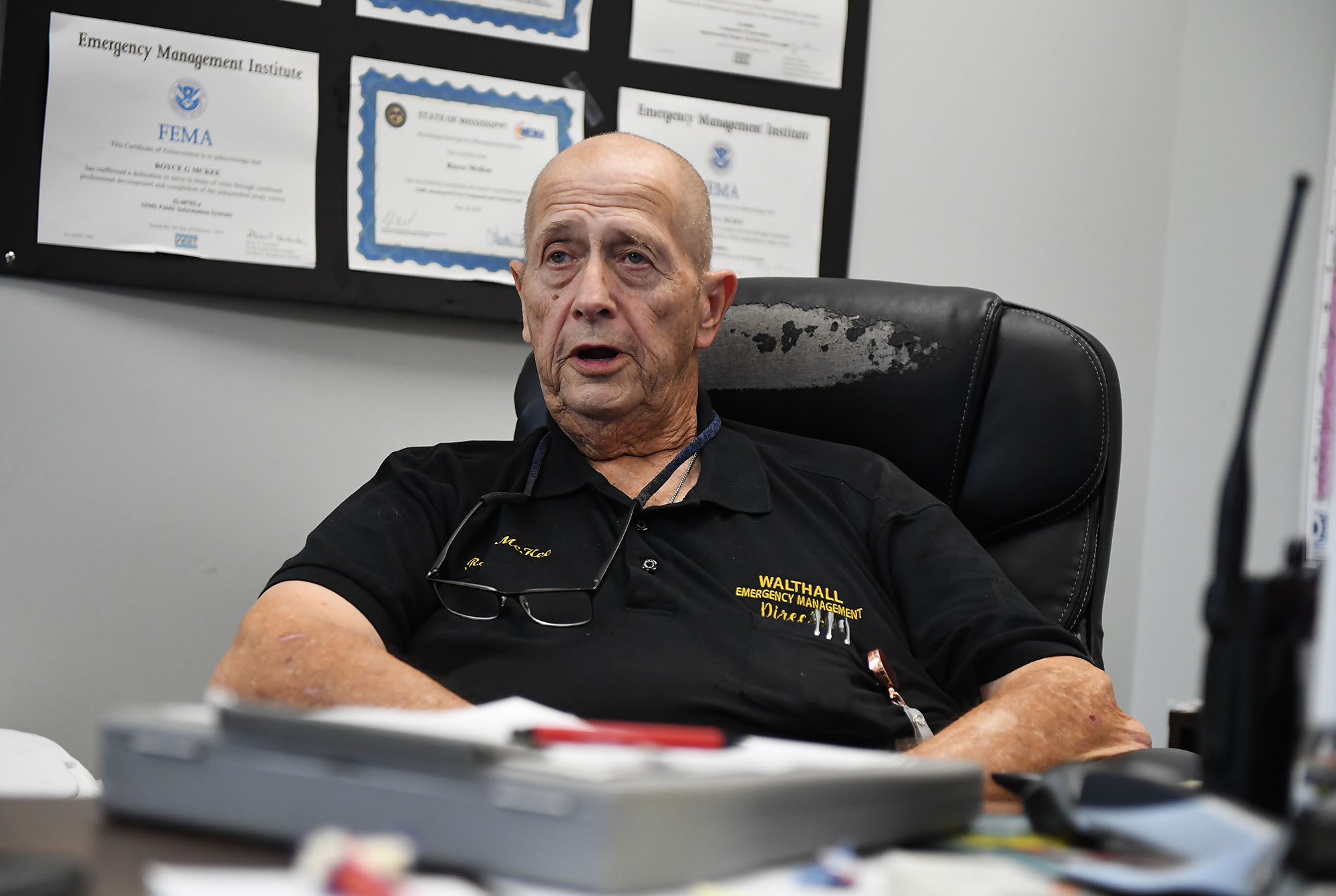
In Walthall County, officials initially spent about $700,000 cleaning up debris, then suspended the cleanup for more than a month because they couldn’t afford to spend more without assurance they would receive federal reimbursement, said county emergency manager Royce McKee. Meanwhile, rubble from splintered trees and shattered homes remained piled along the roadside, creating unsafe obstacles for motorists and habitat for snakes and rodents.
When it received the federal declaration, Walthall County took out a multimillion-dollar loan to pay contractors to resume the cleanup.
“We’re going to pay interest and pay that money back until FEMA pays us,” said Byran Martin, an elected county supervisor. “We’re hopeful that we’ll get some money by the first of the year, but people are telling us that it could be [longer].”
Lampton, who took after his father when he joined the volunteer firefighters 40 years ago, lauded the support of outside groups such as Cajun Navy, Eight Days of Hope, Samaritan’s Purse and others. That’s not to mention the neighbors who brought their own skid steers and power saws to help clear trees and other debris, he added.
“That’s the only thing that got us through this storm, neighbors helping neighbors,” Lampton said. “If we waited on the government, we were going to be in bad shape.”
Lieb reported from Jefferson City, Missouri, and Wildeman from Hartford, Connecticut.
Update 98/25: This story has been updated to include a White House statement released after publication.
This article first appeared on Mississippi Today and is republished here under a Creative Commons Attribution-NoDerivatives 4.0 International License.
The post Presidents are taking longer to declare major natural disasters. For some, the wait is agonizing appeared first on mississippitoday.org
Note: The following A.I. based commentary is not part of the original article, reproduced above, but is offered in the hopes that it will promote greater media literacy and critical thinking, by making any potential bias more visible to the reader –Staff Editor.
Political Bias Rating: Center-Left
This article presents a critical view of the Trump administration’s handling of disaster declarations, highlighting delays and their negative impacts on affected individuals and communities. It emphasizes concerns about government downsizing and reduced federal support, themes often associated with center-left perspectives that favor robust government intervention and social safety nets. However, it also includes statements from Trump administration officials defending their approach, providing some balance. Overall, the tone and framing lean slightly left of center without being overtly partisan.
Mississippi Today
Northeast Mississippi speaker and worm farmer played key role in Coast recovery after Hurricane Katrina
The 20th anniversary of Hurricane Katrina slamming the Mississippi Gulf Coast has come and gone, rightfully garnering considerable media attention.
But still undercovered in the 20th anniversary saga of the storm that made landfall on Aug. 29, 2005, and caused unprecedented destruction is the role that a worm farmer from northeast Mississippi played in helping to revitalize the Coast.
House Speaker Billy McCoy, who died in 2019, was a worm farmer from the Prentiss, not Alcorn County, side of Rienzi — about as far away from the Gulf Coast as one could be in Mississippi.
McCoy grew other crops, but a staple of his operations was worm farming.
Early after the storm, the House speaker made a point of touring the Coast and visiting as many of the House members who lived on the Coast as he could to check on them.
But it was his action in the forum he loved the most — the Mississippi House — that is credited with being key to the Coast’s recovery.
Gov. Haley Barbour had called a special session about a month after the storm to take up multiple issues related to Katrina and the Gulf Coast’s survival and revitalization. The issue that received the most attention was Barbour’s proposal to remove the requirement that the casinos on the Coast be floating in the Mississippi Sound.
Katrina wreaked havoc on the floating casinos, and many operators said they would not rebuild if their casinos had to be in the Gulf waters. That was a crucial issue since the casinos were a major economic engine on the Coast, employing an estimated 30,000 in direct and indirect jobs.
It is difficult to fathom now the controversy surrounding Barbour’s proposal to allow the casinos to locate on land next to the water. Mississippi’s casino industry that was birthed with the early 1990s legislation was still new and controversial.
Various religious groups and others had continued to fight and oppose the casino industry and had made opposition to the expansion of gambling a priority.
Opposition to casinos and expansion of casinos was believed to be especially strong in rural areas, like those found in McCoy’s beloved northeast Mississippi. It was many of those rural areas that were the homes to rural white Democrats — now all but extinct in the Legislature but at the time still a force in the House.
So, voting in favor of casino expansion had the potential of being costly for what was McCoy’s base of power: the rural white Democrats.
Couple that with the fact that the Democratic-controlled House had been at odds with the Republican Barbour on multiple issues ranging from education funding to health care since Barbour was inaugurated in January 2004.
Barbour set records for the number of special sessions called by the governor. Those special sessions often were called to try to force the Democratic-controlled House to pass legislation it killed during the regular session.
The September 2005 special session was Barbour’s fifth of the year. For context, current Gov. Tate Reeves has called four in his nearly six years as governor.
There was little reason to expect McCoy to do Barbour’s bidding and lead the effort in the Legislature to pass his most controversial proposal: expanding casino gambling.
But when Barbour ally Lt. Gov. Amy Tuck, who presided over the Senate, refused to take up the controversial bill, Barbour was forced to turn to McCoy.
The former governor wrote about the circumstances in an essay he penned on the 20th anniversary of Hurricane Katrina for Mississippi Today Ideas.
“The Senate leadership, all Republicans, did not want to go first in passing the onshore casino law,” Barbour wrote. “So, I had to ask Speaker McCoy to allow it to come to the House floor and pass. He realized he should put the Coast and the state’s interests first. He did so, and the bill passed 61-53, with McCoy voting no.
“I will always admire Speaker McCoy, often my nemesis, for his integrity in putting the state first.”
Incidentally, former Rep. Bill Miles of Fulton, also in northeast Mississippi, was tasked by McCoy with counting, not whipping votes, to see if there was enough support in the House to pass the proposal. Not soon before the key vote, Miles said years later, he went to McCoy and told him there were more than enough votes to pass the legislation so he was voting no and broached the idea of the speaker also voting no.
It is likely that McCoy would have voted for the bill if his vote was needed.
Despite his no vote, the Biloxi Sun Herald newspaper ran a large photo of McCoy and hailed the Rienzi worm farmer as a hero for the Mississippi Gulf Coast.
This article first appeared on Mississippi Today and is republished here under a Creative Commons Attribution-NoDerivatives 4.0 International License.
The post Northeast Mississippi speaker and worm farmer played key role in Coast recovery after Hurricane Katrina appeared first on mississippitoday.org
Note: The following A.I. based commentary is not part of the original article, reproduced above, but is offered in the hopes that it will promote greater media literacy and critical thinking, by making any potential bias more visible to the reader –Staff Editor.
Political Bias Rating: Centrist
The article presents a factual and balanced account of the political dynamics surrounding Hurricane Katrina recovery efforts in Mississippi, focusing on bipartisan cooperation between Democratic and Republican leaders. It highlights the complexities of legislative decisions without overtly favoring one party or ideology, reflecting a neutral and informative tone typical of centrist reporting.
-
News from the South - North Carolina News Feed6 days ago
What we know about Charlie Kirk shooting suspect, how he was caught
-
News from the South - North Carolina News Feed6 days ago
Federal hate crime charge sought in Charlotte stabbing | North Carolina
-
Our Mississippi Home5 days ago
Screech Owls – Small but Cute
-
News from the South - Arkansas News Feed6 days ago
NW Arkansas Championship expected to bring money to Rogers
-
News from the South - North Carolina News Feed7 days ago
Under pressure, some immigrants are leaving American dreams behind
-
Mississippi News Video6 days ago
Mississippi Science Fest showcases STEAM events, activities
-
News from the South - Tennessee News Feed6 days ago
What to know about Trump’s National Guard deployment to Memphis
-
News from the South - Texas News Feed6 days ago
Safe Central Texas meet-up spots for online purchases
